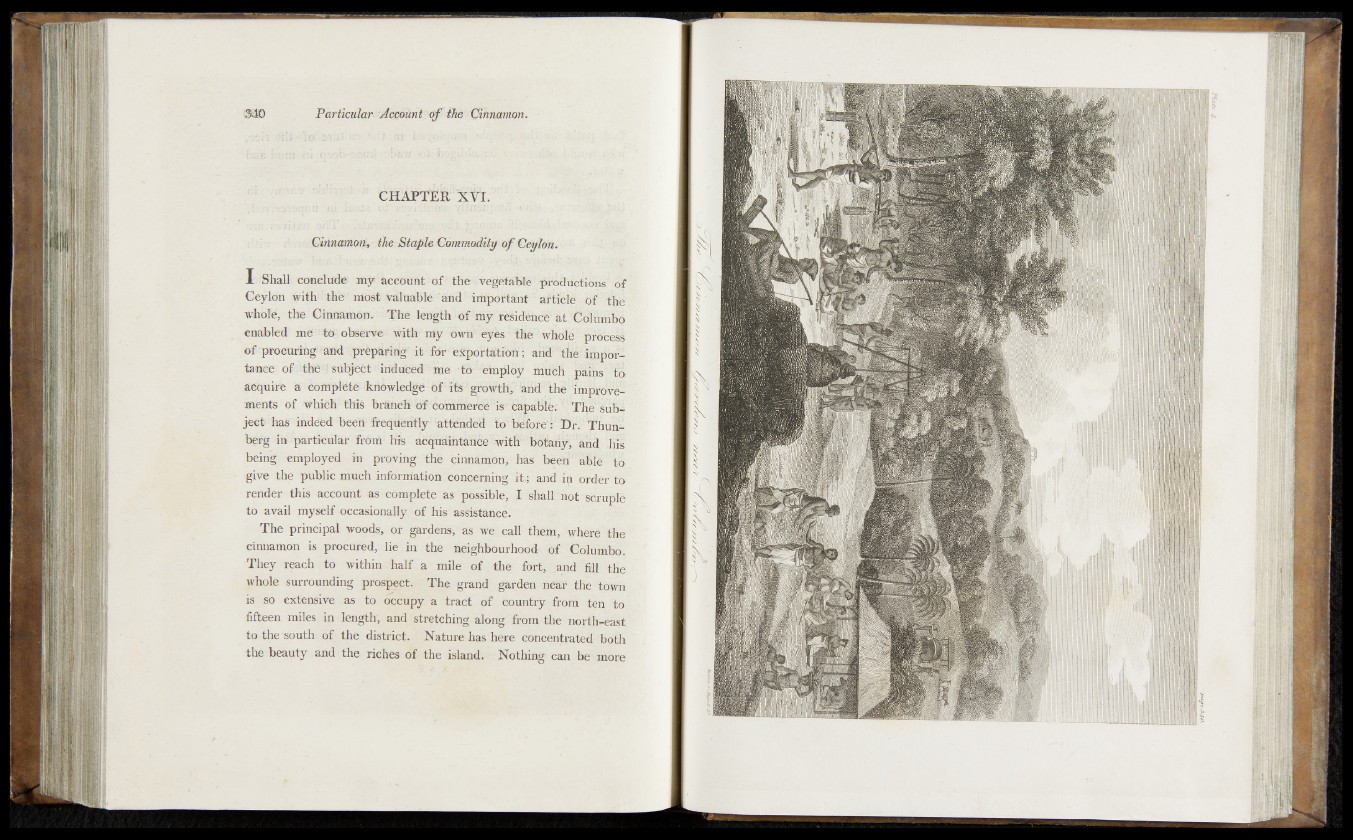
CHAPTER XtT.
Qinncmont, the Staple. Commodity of Ceylon.
I Shall conclude my account of' the., vegetable pfodüctiom' of
Ceylon witto-thë Mös® ysflnalM and SinpoHanfs article tif
^faol'é, the ©inöamöö. The Jéfijgthof my- rësidfehe'e 'at'^bTumbo
•caflifeD niö oï^feWé M ^ ti Irty öwn eyes - the' ‘wfeöfêK process
of procuring afld .prèpdridg' it for expoitatrari* atid Htifé inipor-
tawce of the "subject-induced’ine to einploy much pims,ffo
enquire a complete knowledge of ffer growth,' :andHhé,jitó^rovè^
merits óf whtóh this brötich 'èotehfertó;%' fckpaHlècThe :suh-
jeef'has ifidéëd beéfr fteqüently* attended t o '^ o r é '^ D r . ‘TAuf£
berg id pari&ditór fröin hfe aopéititanfe ' w ittf''ti$ y y ; 'and, 'lilt
being employed in proving the cinnamon;. ha^ beer?^Eile"*t0
give the public much information concerning it,; and ip OjÖêrlto
redder this account as> complete as possiblfe^ I shall' not- s^ruplé
to avail myself occasionally of his assistance.
The principal woods, or gardens, as we'call them, -where'-the
cinnamon is procured, lie in the neighbourhood ofTfolumbo.
They reach to within half a mile of the fort, „and frll the
whole surrounding prospect. The grand garden near the town
is so extensive as to occupy a tract of country from ten to
fifteen miles, in length, and stretching along from the northeast
to the 'south of the district. ' Nature has here concentrated both
the beauty and the riches dfothe island. | Nothing can he more